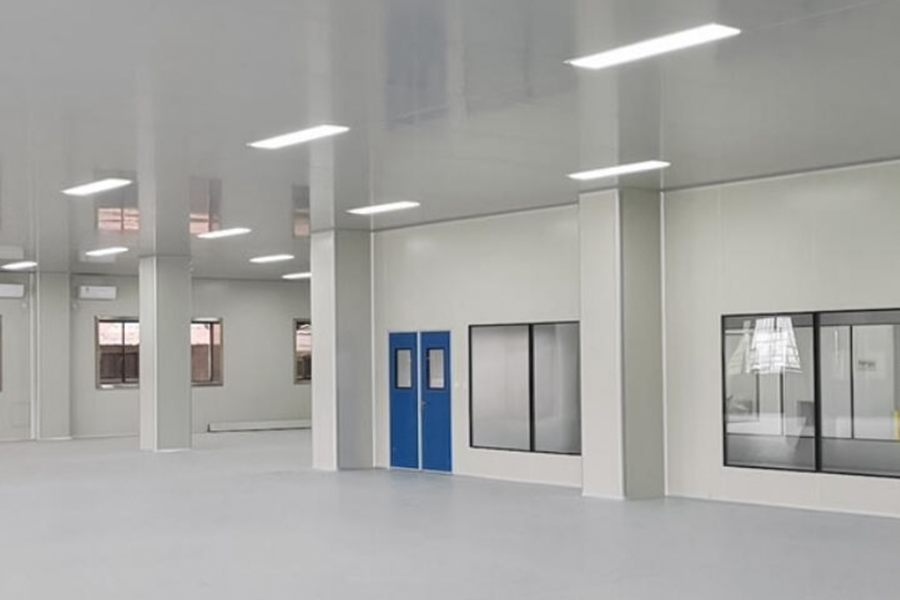

The key points of using the air shower room The air sho […]
The key points of using the air shower room
The air shower is the passage for people to enter the clean room. It can reduce the pollution problems caused by entering and leaving the clean room, and reduce the large amount of dust particles caused by the entry and exit of people and goods. A fully functional "airlock" is installed at the entrance of the clean room. It can reduce the number of air pollution particles. When people and goods pass through the air shower, the pollution particles are shot off by the filtered clean air, and the high wind speed blowing and drifting particles above 25m/s are basically filtered out by two-stage filters. In order to maintain the use of the air shower, maintain the cleanliness of the clean room environment.
1. When entering the clean room, you should take off your coat in the outer changing room, and remove your watches, mobile phones, accessories and other items.
2. Enter the inner changing room and wear clean clothes, caps, masks, and gloves.
3. After pulling open the stainless steel air shower door and entering the air shower room, the air shower door will automatically close the outer door, the infrared sensor will automatically start the air shower, and the air shower will blow for 15 seconds.
Factors affecting the air in the air shower:
1. The operators in the clean room must work in strict accordance with the operating rules of the clean room. The doors and windows of the clean room should be closed. There should be a buffer zone for the transfer of personnel and items between the clean room and the non-clean room, and there should be wind bath equipment to prevent the convection of the airflow. Personnel not related to production cannot enter the clean room.
2. The number of air changes in the clean room and the air supply volume of the air conditioning purification system are the main internal factors to maintain the positive pressure and cleanliness of the clean room, but it is restricted by the final resistance of the filters at all levels in the purification system.
3. The equipment in the clean room is required to be cleaned and maintained on a regular, regular basis and with designated personnel, whether the materials and cleaning liquids used in the cleaning comply with the clean room management regulations, etc.
4. For users, the cleanliness of the cleanroom is the focus of their concern. The pollution sources of the cleanroom in operation are people and objects entering the cleanroom. Dust particles generated during production are also another reason that affects the cleanliness of the room.
5. The reasonable diversion of people and goods is of great significance to maintain the cleanliness of the air shower room. Whether people change clothes and blow shower before entering the clean room, whether the clothes meet the standards of clean management standards, and some personnel with high requirements for cleanliness in the production process have to take a bath before entering; whether the objects are packaged and blown before entering the clean room Shower, whether the exchanged materials meet the clean room standards, etc.

In simple terms, a cleanroom is a controlled area within a wider facility that maintains a specific level of air particles and other contaminants. The three ways in which a cleanroom is clean are: The air quality is controlled. All surfaces and equipment are always cleaned to a certain standard.
Cleanroom Classifications:Pharmacy Cleanroom
Cleanrooms provide an enclosed environment with controlled levels of particulate matter (such as dust, vapours and airborne particles). Establishing a cleanroom involves a number of steps including engineering, manufacturing and control strategies. While they are used for a range of medical, scientific and manufacturing applications, we will provide a brief overview of cleanrooms used for pharmaceutical applications that do not handle potent chemicals or hazardous organisms.
Depending on the type of pharmaceutical product you manufacture and federal standards, you may or may not need a cleanroom. A clean area ventilated with filtered air can be used as an alternative to a clean room when producing non-sterile products. You should define your clean zone or cleanroom standards and procedures according to federal standards (e.g. US FED209E) or international standards (e.g. ISO 14644-1 and ISO 14698). For sterile pharmaceutical products, cleanrooms are required to limit airborne particles and contamination from pharmaceutical products. The standards and requirements of a cleanroom are based on its classification and it is important that a room is properly classified as operators need to comply with all requirements and maintain the cleanliness standards for a given classification during operation.
Our new models offer superb design;competitive prices and their new features give them distinct advantages over similar products from other manufacturers.